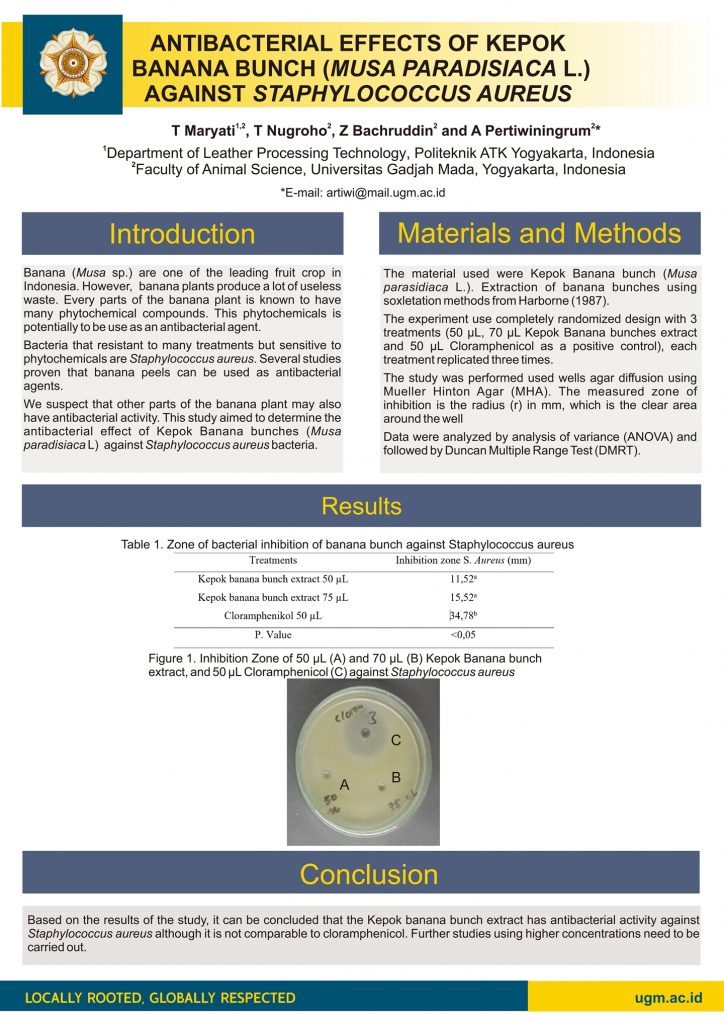Paper ID: 69
ANTIBACTERIAL EFFECTS OF KEPOK BANANA BUNCH (MUSA PARADISIACA L.) AGAINST STAPHYLOCOCCUS AUREUS
Authorship
Tutik Maryati 1 2, Tristianto Nugroho 2, Zaenal Bachruddin 2 and Ambar Pertiwiningrum 2
1Department of Leather Product Technology, Politeknik ATK Yogyakarta, Indonesia
2Faculty of Animal Science, Universitas Gadjah Mada, Indonesia
tutikmaryati@mail.ugm.ac.id
Abstract
Banana plants well-known to contain diverse phytochemical compound. This study aimed to identify the antibacterial effects of Kepok Banana bunches (Musa paradisiaca L.) against Staphylococcus aureus bacteria. This research was conducted in two stages. In the first step were a meta-analysis of the potency for antibacterial content of banana bunches based on published studies. Then, laboratory analysis were carried out to determine the zone of bacterial inhibition. The experiment use completely randomized design with 3 treatments (50 µL, 70 µL Kepok Banana bunches extract and 50 µL Cloramphenicol as a positive control), each treatment replicated three times. The study was performed used wells agar diffusion. Data were analyzed by analysis of variance (ANOVA) and followed by Duncan Multiple Range Test (DMRT). Results showed that Kepok Banana bunches had several potential antibacterial contents. Phytochemical content that has the potential as an antibacterial are tannins, alkanoids, glycosides, flavonoids, saponins and volatile oils. Treatments showed different (P<0.05) results in bacterial inhibition zones. Cloramphenikol produces the highest inhibitory zone (34.78 mm), while the difference in the concentration of banana bunches produces the same inhibitory zone (50 µL : 11.52 mm; 70 µL : 15.52). It is concluded that Kepok Banana bunches has potency to use as an antibacterial against Staphylococcus aureus.
